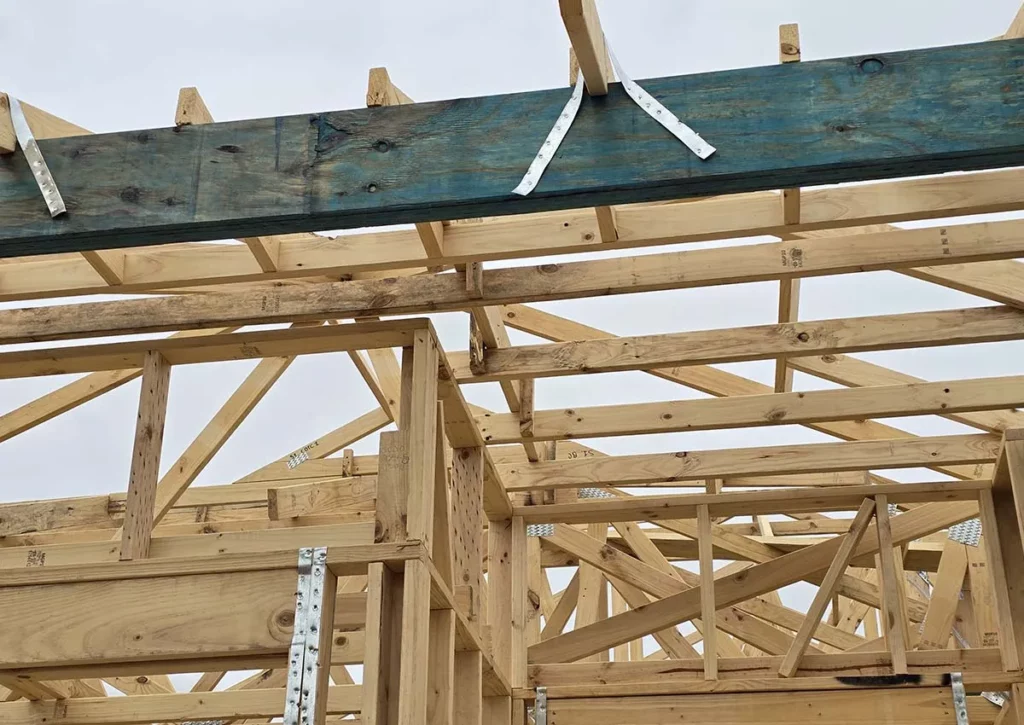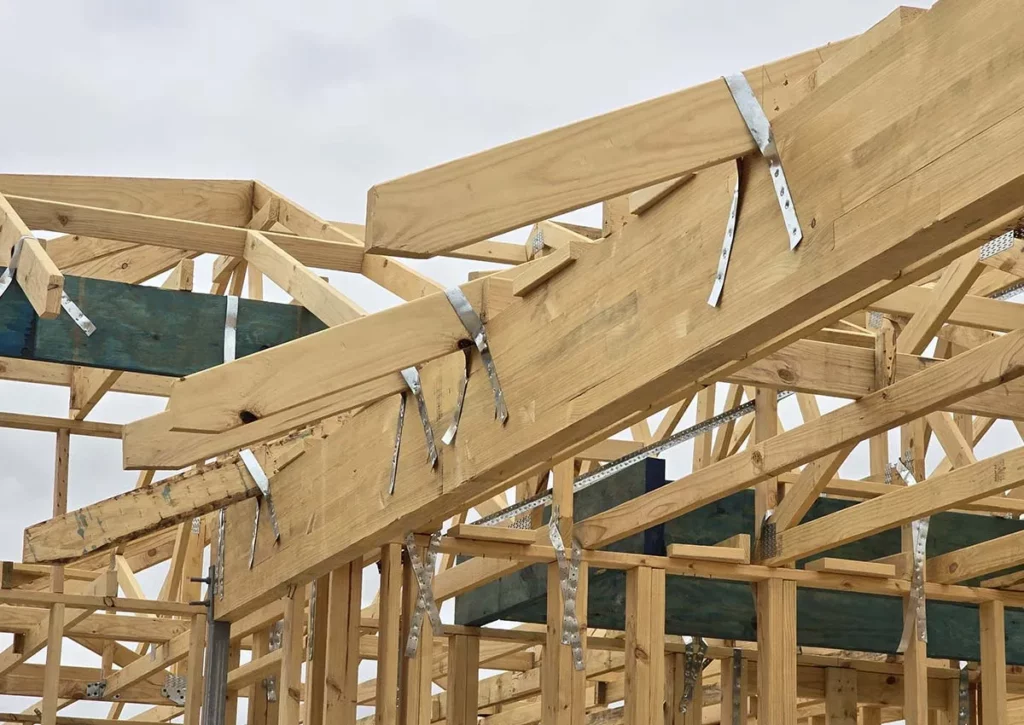The construction industry offers a range of options when it comes to formwork systems. One popular comparison to consider is between Laminated Veneer Lumber (LVL) formwork and traditional timber solutions. Each has its own advantages and disadvantages, which we will explore in this article. By understanding the characteristics, benefits, and drawbacks of each option, you can make an informed decision on the most suitable formwork system for your project.
Understanding LVL Formwork
Definition and Usage of LVL Formwork
LVL formwork refers to a type of engineered timber product that is widely used in the construction industry for creating concrete formwork. LVL panels are made by bonding thin veneers of wood together with adhesive, resulting in a strong and versatile material suitable for various applications.
One of the primary uses of LVL formwork is in wall and slab construction. It provides a stable and durable mold for pouring concrete, ensuring accurate shaping and structural integrity.
Key Features of LVL Formwork
LVL formwork offers several key features that make it a preferred choice for many construction projects:
- Strength and durability: LVL panels are engineered to provide high load-bearing capacity and resistance to bending or warping. This strength ensures stability and longevity in formwork systems.
- Consistent quality: LVL is manufactured to strict quality standards, resulting in uniform strength and dimensions across panels. This consistency enables precise formwork assembly and efficient construction processes.
- Dimensional stability: Unlike traditional timber, LVL panels have minimal moisture content, reducing the risk of swelling or shrinking. This stability minimizes the chances of formwork deformation during concrete curing.
- Flexibility: LVL formwork can be easily cut and shaped to accommodate various design requirements. It allows for customization and adaptation to different construction projects.
- Environmentally friendly: LVL is often sourced from sustainably managed timber plantations, making it a renewable and eco-friendly choice for formwork systems.
Another notable feature of LVL formwork is its fire resistance. Due to the bonding process and the use of adhesive, LVL panels have inherent fire-resistant properties. This makes them a safe choice for construction projects where fire safety is a concern.
Additionally, LVL formwork is known for its excellent dimensional stability. The minimal moisture content in LVL panels ensures that they maintain their shape and size even in humid or wet conditions. This stability is crucial in formwork systems, as it prevents any distortion or misalignment during the concrete pouring process.
Furthermore, LVL formwork offers a high level of reusability. Unlike traditional formwork materials, such as plywood, LVL panels can be used multiple times without compromising their structural integrity. This not only reduces construction costs but also minimizes waste and contributes to sustainable building practices.

Delving into Traditional Timber
What is Traditional Timber?
Traditional timber formwork involves the use of solid wood components, such as sawn timber boards, for creating molds to hold wet concrete. This method has been widely practiced for centuries and remains a viable option in many construction projects.
Delving deeper into the world of traditional timber, it’s fascinating to note that the choice of wood species can significantly impact the performance and longevity of the formwork. Different types of timber, such as pine, spruce, or Douglas fir, offer varying levels of strength, durability, and resistance to moisture, ensuring that the formwork can withstand the pressures of concrete pouring and curing. Read more about durability at https://www.theengineeringchoice.com/what-is-durability/
Characteristics of Traditional Timber
Traditional timber formwork possesses several characteristics worth considering:
- Availability: Timber is readily available in most regions, making it easily accessible for construction purposes.
- Cost-effectiveness: Traditional timber formwork can sometimes be a more economical choice, depending on the specific project requirements and local market conditions.
- Adaptability: Timber formwork can be easily modified on-site to accommodate design changes or irregularities in construction elements.
- Insulation: Timber possesses natural insulation properties, which can provide thermal and sound insulation benefits in buildings.
Furthermore, the environmental sustainability of traditional timber formwork is a key aspect to consider. Wood is a renewable resource, and when sourced from responsibly managed forests or reclaimed sources, it can contribute to a project’s green credentials. Additionally, the biodegradability of timber formwork means that at the end of its lifecycle, it can be disposed of in an environmentally friendly manner, reducing the overall ecological impact of construction activities.
Pros and Cons of LVL Formwork
Advantages of LVL Formwork
When considering LVL formwork, it is essential to understand its advantages:
- Superior strength: LVL formwork offers excellent load-bearing capacity, enabling it to withstand heavy concrete pours without compromising structural stability.
- Dimensional stability: LVL panels have minimal moisture content, ensuring they maintain their shape and size during the formwork process, resulting in accurate concrete shapes.
- Cost-effective in the long run: While LVL formwork may have a higher upfront cost, its durability and reusability can lead to cost savings over multiple construction projects.
- Reduced labor and material waste: LVL formwork can be easily assembled and disassembled, reducing labor time and minimizing material waste during construction.
Moreover, LVL formwork is known for its eco-friendly nature. The production process of LVL involves using smaller, fast-growing trees, making it a sustainable option for construction projects. Additionally, the durability of LVL formwork means that it can be reused multiple times, reducing the demand for new materials and minimizing environmental impact. Click here to read more about sustainable.
Disadvantages of LVL Formwork
However, LVL formwork also has some drawbacks to keep in mind:
- Higher initial investment: LVL formwork can be more expensive compared to traditional timber formwork, especially for small-scale projects where the initial cost is a crucial factor.
- Limited onsite modification: Unlike timber formwork, LVL panels are not as easily modified on-site, requiring meticulous planning and accurate measurements beforehand.
Another challenge with LVL formwork is its weight. Due to the high density of laminated veneer lumber, handling and transporting LVL panels can be more labor-intensive compared to other formwork materials. This weight factor needs to be taken into consideration during the planning stages of a construction project to ensure efficient logistics and workflow.
Pros and Cons of Traditional Timber
Benefits of Using Traditional Timber
Traditional timber formwork offers several advantages worth considering:
- Affordability: Timber formwork can be a cost-effective solution for small-scale projects, especially when considering the initial investment.
- Easy on-site modifications: Timber formwork allows for convenient alterations on-site, accommodating design changes and irregularities during the construction process.
- Thermal and sound insulation: Timber possesses inherent insulation properties, providing advantages in terms of both thermal efficiency and noise reduction in buildings.
Moreover, traditional timber has a natural aesthetic appeal that can enhance the visual appeal of a structure. The warmth and texture of timber can create a welcoming and cozy atmosphere, making it a popular choice for residential and commercial projects alike.
Drawbacks of Traditional Timber
However, traditional timber formwork also presents certain drawbacks:
- Higher maintenance: Timber formwork requires regular maintenance, including sealing, treatment, and periodic repairs, to ensure its longevity and performance.
- Lower dimensional stability: Traditional timber can be more prone to swelling, warping, or shrinking due to moisture absorption, potentially affecting the accuracy and stability of the formwork system.
- Limited reusability: Timber formwork may have a shorter lifespan compared to LVL formwork, leading to higher replacement costs and increased environmental impact.
Despite these drawbacks, the biodegradability of timber can be seen as an environmentally friendly feature. When properly sourced from sustainably managed forests, timber formwork can be a renewable and eco-conscious choice for construction projects, contributing to a more sustainable built environment.
Comparing LVL Formwork and Traditional Timber
Cost Comparison
When comparing the costs of LVL formwork and traditional timber, it is essential to consider both the initial investment and long-term expenses.
While LVL formwork might have a higher upfront cost, its durability and reusability can result in cost savings over multiple projects. This is particularly advantageous for construction companies that frequently undertake large-scale projects. The ability to reuse LVL formwork reduces the need for constant repurchasing of materials, ultimately leading to significant cost reductions in the long run. On the other hand, traditional timber formwork may offer a more affordable solution for small-scale projects or instances where reusability is not a significant concern. It provides a cost-effective option for those working on a tight budget or projects with limited lifespan.

Durability Comparison
In terms of durability, LVL formwork typically outperforms traditional timber due to its superior dimensional stability and strength. LVL panels are engineered to withstand heavy loads and resist warping or shrinking, ensuring consistent formwork performance throughout the construction process. This durability advantage makes LVL formwork an excellent choice for projects that require long-lasting and reliable formwork systems, such as high-rise buildings or infrastructure projects.
However, with proper maintenance and care, timber formwork can also provide satisfactory durability. Regular sealing, treatment, and repairs can help mitigate the effects of moisture and extend the lifespan of traditional timber mold systems. This can be particularly beneficial for projects where the formwork will be used for a limited time or in environments with less demanding structural requirements.
Environmental Impact Comparison
From an environmental perspective, LVL formwork holds an advantage over traditional timber formwork. LVL is often sourced from sustainably managed forests, where responsible harvesting practices promote forest regeneration and biodiversity conservation. This ensures that the use of LVL formwork aligns with sustainable construction practices, reducing the environmental impact of the construction industry.
While timber formwork can be an eco-friendly choice when sourced from certified sustainable forests, there is a greater risk of overexploitation and deforestation if timber is not responsibly managed. It is crucial to consider the origin of the timber and ensure it comes from well-managed forests to minimize the environmental footprint of the construction project.
Ultimately, the choice between LVL formwork and traditional timber should consider sustainability goals and local availability of materials. By opting for LVL formwork, construction companies can contribute to the preservation of forests and promote responsible sourcing practices.
When making a decision between LVL formwork and traditional timber, it is important to weigh the various factors discussed above. Each option has its own advantages and disadvantages, and the choice should be based on the specific requirements of the project, budget constraints, durability expectations, and environmental considerations. By carefully considering these factors, construction professionals can make an informed decision that aligns with their construction needs and sustainability goals.
Other resources: How to Choose the Best LVL Timber for Formwork
